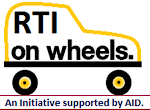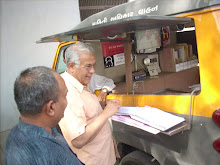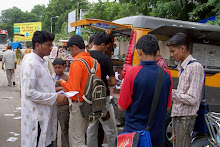Financial Express: New Delhi: Thursday, 10 July 2025.
An RTI revealed that Delhi Police operates 312 banned end-of-life vehicles. The Vahan database reveals there are approximately 62 lakh end-of-life vehicles in Delhi, including 41 lakh two-wheelers, 18 lakh four-wheelers, and the remaining goods carriers and commercial vehicles.
The End-of-Life (EOL)
vehicles ban has been nothing short of controversial for Delhi residents, but
this really takes the cake. An RTI response received by Newslaundry reveals
that some are above the law, and the EOL ban is not relevant to them. Believe it
or not, Delhi Police’s fleet currently has over 300 vehicles which legally
should not be plying on the road. The good news is that with the Commission for
Air Quality Management (CAQM) deciding to defer the fuel ban on end-of-life
vehicles till November 1, 2025, both the citizens and the authorities have some
breathing space to change or upgrade their vehicles.
Speaking to Newslaundry, Special CP (Traffic) Ajay Chaudhary clarified that vehicles impounded during the first phase of the now-deferred policy to November can be released within 15 days after paying a fine and may be transferred outside Delhi upon obtaining a No Objection Certificate.
The fuel ban for old vehicles starts this November
After a massive public backlash and technical issues, the Delhi government reached out to CAQM to defer the EOL ban. The committee announced that the vehicle ban will now come into effect from November 2025 across the National Capital Region (NCR), including Gurugram, Faridabad, Ghaziabad, Gautam Budh Nagar, and Sonipat.
The authorities enforced the EOL vehicle ban from July 1, but after seeing a massive uproar by the public, Delhi Environment Minister Manjinder Singh Sirsa intervened by writing to the Commission for Air Quality Management (CAQM), arguing that the fuel ban on end-of-life vehicles was premature and unfair, especially for middle-class families dependent on older vehicles for their livelihood. He also highlighted significant technical issues with the Automated Number Plate Recognition (ANPR) system, noting that its sensors frequently failed to detect older vehicles lacking High Security Registration Plates (HSRP). Owing to these technical issues and the lack of seamless integration with databases from neighbouring states, the system failed to identify a significant number of end-of-life vehicles, making enforcement more challenging.
The Vahan database reveals approximately 62 lakh end-of-life vehicles in Delhi, including 41 lakh two-wheelers, 18 lakh four-wheelers, and the remaining goods carriers and commercial vehicles. This staggering number highlights the growing challenge of managing outdated vehicles in the capital, despite regulations banning their use due to environmental concerns. The data underscores the need for effective vehicle scrappage policies and stricter enforcement to curb pollution and ensure compliance with green norms in Delhi’s transportation sector.
An RTI revealed that Delhi Police operates 312 banned end-of-life vehicles. The Vahan database reveals there are approximately 62 lakh end-of-life vehicles in Delhi, including 41 lakh two-wheelers, 18 lakh four-wheelers, and the remaining goods carriers and commercial vehicles.
 |
| An RTI exposed Delhi Police using 312 banned end-of-life vehicles, flouting their own regulations. (Credit: PTI) |
Speaking to Newslaundry, Special CP (Traffic) Ajay Chaudhary clarified that vehicles impounded during the first phase of the now-deferred policy to November can be released within 15 days after paying a fine and may be transferred outside Delhi upon obtaining a No Objection Certificate.
The fuel ban for old vehicles starts this November
After a massive public backlash and technical issues, the Delhi government reached out to CAQM to defer the EOL ban. The committee announced that the vehicle ban will now come into effect from November 2025 across the National Capital Region (NCR), including Gurugram, Faridabad, Ghaziabad, Gautam Budh Nagar, and Sonipat.
The authorities enforced the EOL vehicle ban from July 1, but after seeing a massive uproar by the public, Delhi Environment Minister Manjinder Singh Sirsa intervened by writing to the Commission for Air Quality Management (CAQM), arguing that the fuel ban on end-of-life vehicles was premature and unfair, especially for middle-class families dependent on older vehicles for their livelihood. He also highlighted significant technical issues with the Automated Number Plate Recognition (ANPR) system, noting that its sensors frequently failed to detect older vehicles lacking High Security Registration Plates (HSRP). Owing to these technical issues and the lack of seamless integration with databases from neighbouring states, the system failed to identify a significant number of end-of-life vehicles, making enforcement more challenging.
The Vahan database reveals approximately 62 lakh end-of-life vehicles in Delhi, including 41 lakh two-wheelers, 18 lakh four-wheelers, and the remaining goods carriers and commercial vehicles. This staggering number highlights the growing challenge of managing outdated vehicles in the capital, despite regulations banning their use due to environmental concerns. The data underscores the need for effective vehicle scrappage policies and stricter enforcement to curb pollution and ensure compliance with green norms in Delhi’s transportation sector.














































































